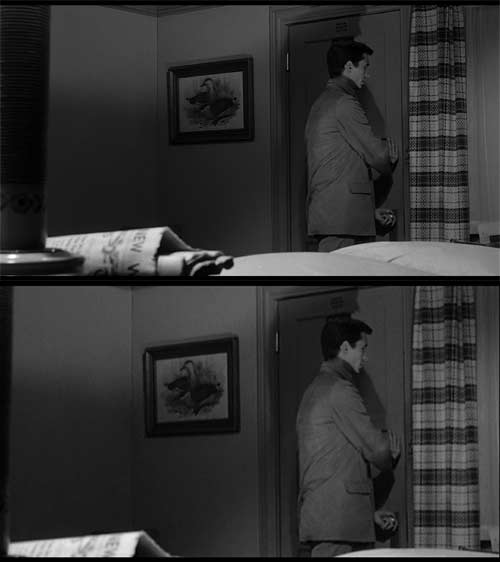 Picture:
Picture:  Sound:
Sound:  Extras:
Extras: 

Movie:  Picture:
Picture:  Sound:
Sound:  Extras:
Extras: 
The camera angles and pacing were so good because this was almost a scene for scene, shot for shot remake of Hitchcock's masterpiece. So why was it so disappointing? What was the magic of the original that the remake missed?
That I don't know. But if you want to try to work it out for yourself, the best way to explore the original is on the Blu-ray version, newly released by Universal.
The movie was actually distributed originally by Paramount, but that company had, as the documentaries accompanying this movie make clear, been surprisingly passive in supporting the movie's creation. Hitchcock provided the primary funding himself through his production company (less than one million dollars), and cut costs in many ways, not least by using the film crew from his 'Alfred Hitchcock Presents' television show. In the end, a few years after release (by which time the value of the property must surely have been obvious), Paramount sold its rights off to Universal.
Which company has done a very fine job in this Blu-ray release. Let's first look at the video.
Famously this movie was shot in black and white at a time when colour had come to dominate Hollywood. Black and white film stock is typically 'faster' (ie. needs less time to expose) and finer in grain than colour. So perhaps it shouldn't be surprising that this presentation is very sharp on the screen. Don't worry about the rather soft, slightly jittery opening credits. Once the proper filming starts, the quality cuts in. This was so sharp that I examined many freeze frames to see if there was some edge enhancement or other artificial sharpening, but if there was it was just below the threshold of perceptibility.
There is grain, but it is very fine and highly natural.
Compared to this, the earlier Psycho DVD looks to be made of frames vaguely daubed with a cotton wool applicator. Or so the DVD looks for the first 56 minutes. After that point its fields are accidentally reversed, reducing effective resolution even further. This Psycho Blu-ray is beautifully sharp, delivering amazing detail throughout.
It is also framed better in parts. While the visible area of the picture is the same for both most of the time, there are sections in the middle where excessive cropping actually diminishes Hitchcock's visual clues. The framing of the Blu-ray is properly restored.
Meanwhile, the black and white gamut appears stretched to the limits of the medium so that the blacks are properly black, whites properly white, and the in-betweens consequently have the range to express great detail.
The sound is fascinating. You get two English audio tracks. The original (to which it defaults) is the original mono, presented in two channel DTS-HD Master Audio. But there is also a 5.1 channel version, complete with 24 bits of resolution. Creating this involved new technology from French company Audionamix, which can extract individual elements from mono mixes (it calls these elements 'stems'). Not only were the effects and dialogue pulled out, but so were different parts of the orchestra. All this has been remixed, for the most part quite tastefully. There is a good spread of the orchestra during the credits. This seems accurate (first violins to the left of centre, for example), with none of the colouration that you'd expect if some crude comb filter had been used for the separation.
After that scene when Norman is cleaning up, he is standing inside the room. The shower is still running in the bathroom, and it is well located aurally, to the left off screen. He closes the door behind him and this sounds with no interruption to the shower. He walks to the bathroom with the camera panning to keep him in frame, and the sound of the shower tracks in the frame smoothly as he arrives. This is marvelous stuff! Earlier as Marion is arriving at the motel, the raindrops on her car are splashed all around, individualised, but with a tasteful bias towards the front.
The dialogue is presented louder, compared to the rest of the mix, than is the norm today. But that's in keeping with the its relative level in the original mono version, so it was appropriate to present it that way.
This presentation of Hitchcock's Psycho is, basically, perfection.
 (Australian rating); Region Free
(Australian rating); Region Free
The following video bitrate graph was generated by BDInfo 0.5.4:
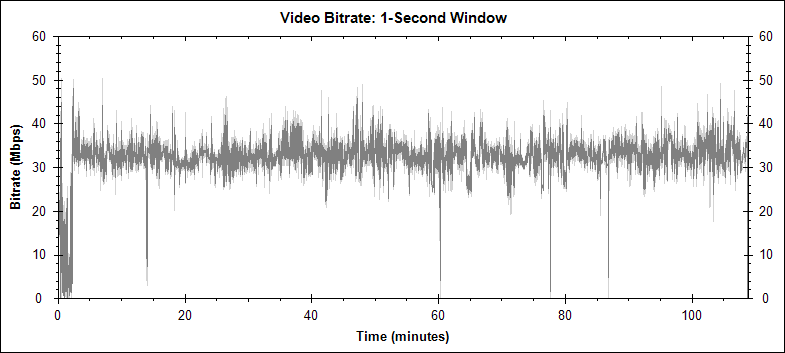
At the top of each is the full frame (suitably shrunk down) used in the comparison, with a 250 pixel wide detail from the frame underneath. The left side is from the PAL DVD. The image was captured digitally from the disc, scaled up from its native 720 by 576 pixel resolution to 1,024 by 576 (to present in the correct aspect ratio) by the application. I then scaled it, in order for it to be comparable to the Blu-ray version, to 1,920 by 1,080 pixels.
The detail is from that last scaled version, and has not been rescaled again. The right side is from the Australian Blu-ray. This has not been scaled at all. Different applications were used to capture the two frames, so some caution should be exercised in judging colour and brightness.
For visitors from NTSC lands, generally the PAL DVD is just a touch sharper than the NTSC DVD.
The DVD had a problem that initially went unnoticed by me (and, as far as I can see, everyone else). It suffered from the dreaded field reversal, which inevitably damages picture on modern displays. Fortunately, this affliction starts only at 55:53.24, so I've used frames from the first half of the movie only.
I just love the way that fabris and stitching looks so much more realistic on Blu-ray:
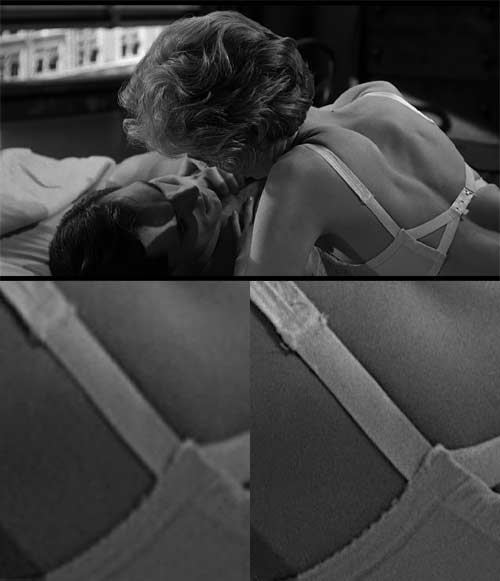

On the DVD, it's hard to even see who might be standing there, let alone the cyclone wire of the fence:
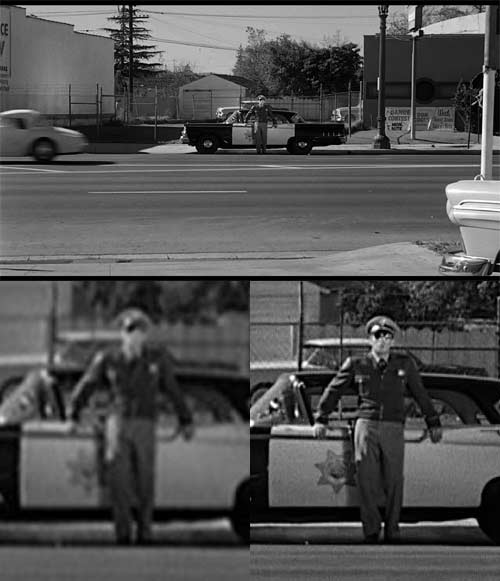
Look at the detail on the ink pot:
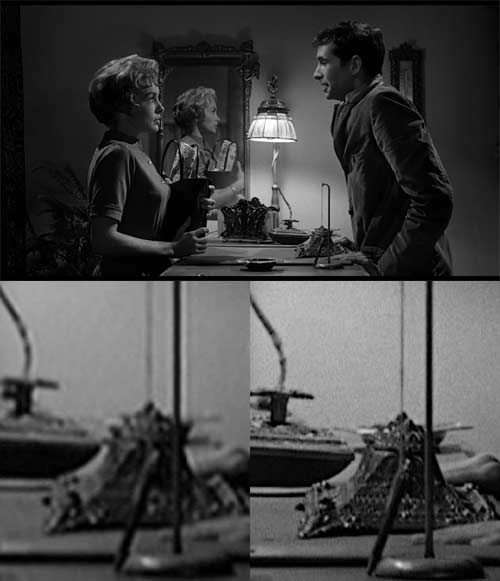
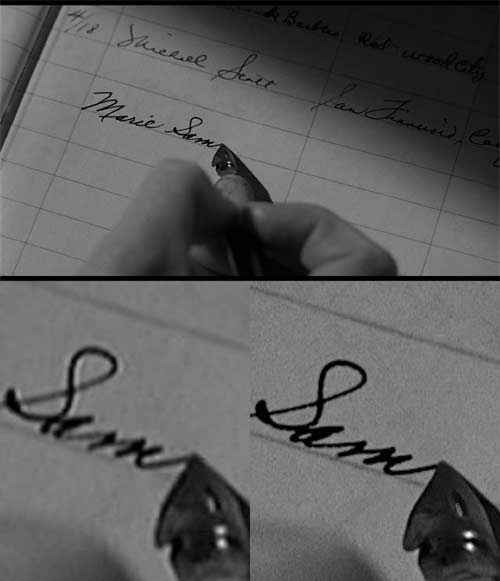
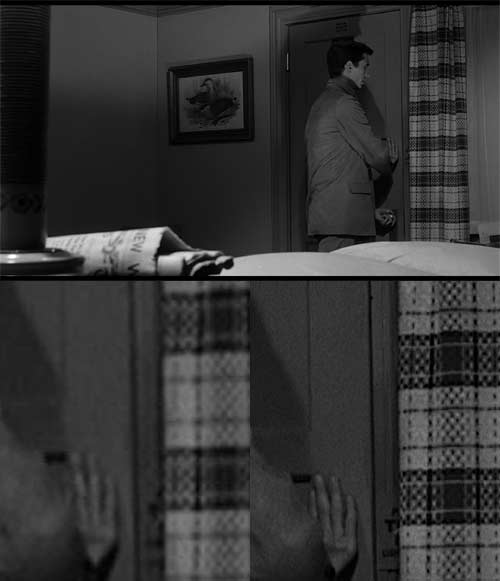
I selected the one above to show the detail on the drapes available from Blu-ray, which it does rather nicely, but this also showed substantially different framing for the two versions (the others above seem pretty much the same). So this shows the full frames from both versions, Blu-ray top and DVD bottom. Note how the newspaper, which is an important element at this point of the movie, loses much of its prominence in the DVD version:
